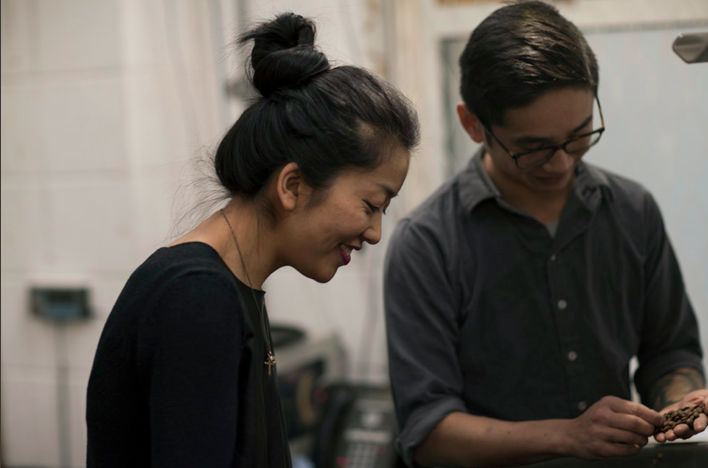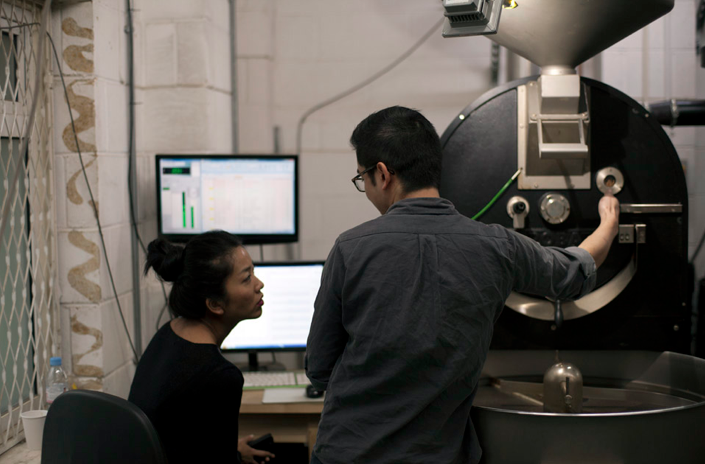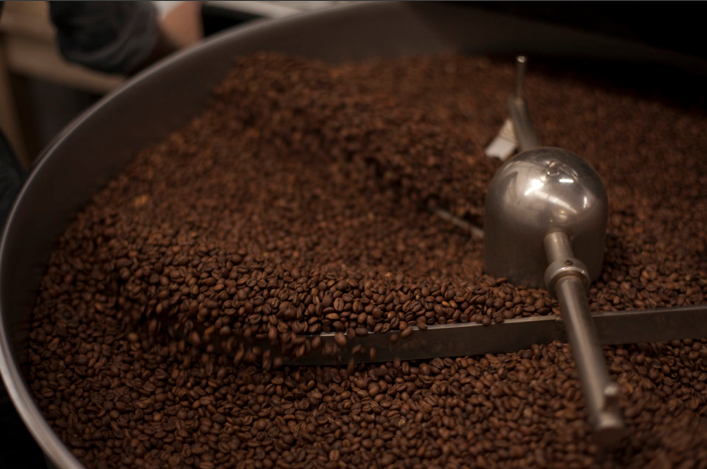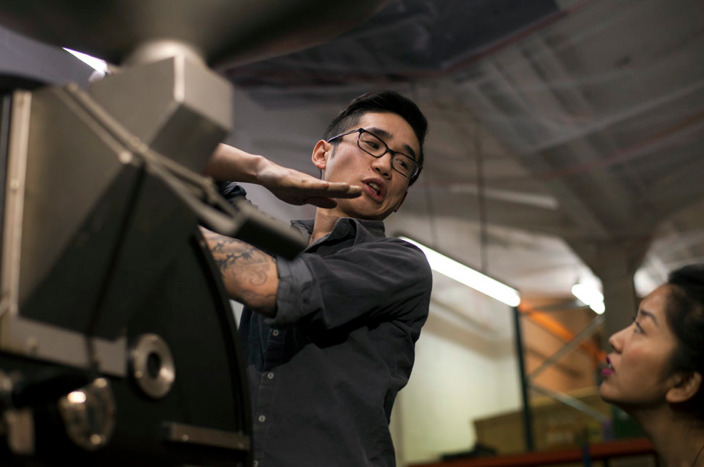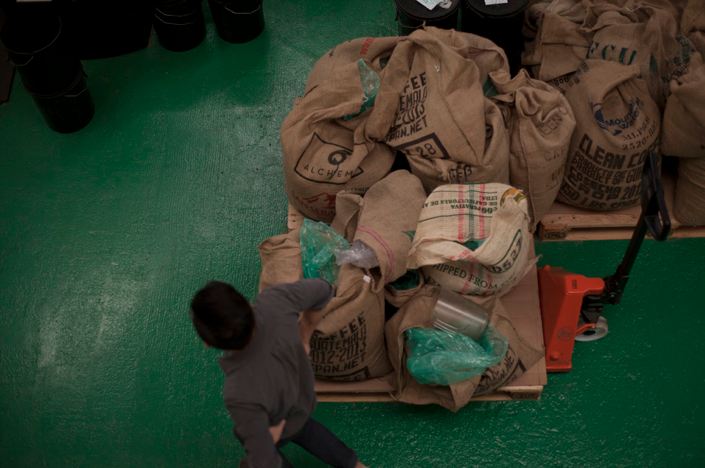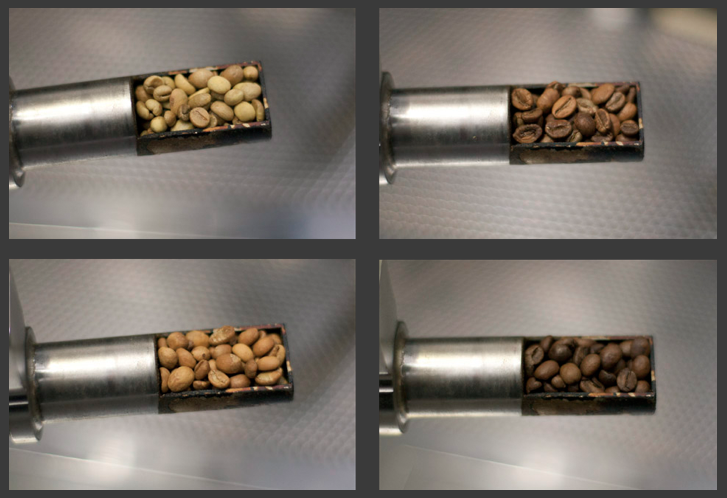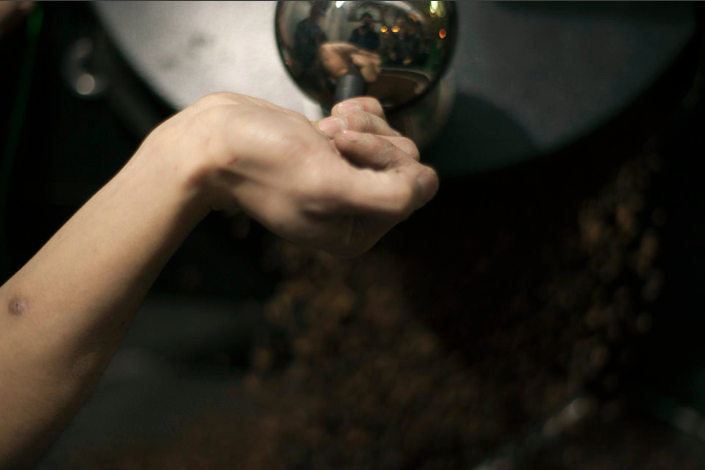My very first Blog originally for Origin Outterwear on Roasting and the basics with Phil from Alchemy Coffee:
This is my first official blog post for Urban Outerwear I thought it would be good to go back to basics and start with looking at where beans are sourced and how coffee is actually roasted. I want to give you an understanding of the process by taking you through it with an experienced and passionate coffee team – hence my visit to Alchemy coffee this week. Joe, the founder and owner of Alchemy, is still as active and passionate as ever about coffee and the industry. After working as a structural engineer, he began his journey into coffee in his late 20’s on a visit to Guatemala, Belize, Mexico (Yucatan) and Cuba with his wife Anne. Through fate, he was invited as an observer for the Cup of Excellence in Guatemala. There he got to meet the judges and the national cuppers and other industry specialists, but what made the most impact on him was meeting the local growers. It was here that Joe got the itch for what is now a thriving career in coffee. Alchemy have a range of espresso and filter coffees, which I used in my slow drip cold filter coffee during this London “summer” as I was particularly impressed by their Guatemalan acquisitions. Joe is a fan and somewhat of a connoisseur of this region having done a number of trips there – all of Alchemy’s Guatemalan beans are direct trade, which I think is pretty amazing. They use a combination of direct trade and agents to have a solid range of Guatemalan, Columbian, Brazilian, Rwandan, Bolivian, El Salvador and Ethiopian beans. I was surprised to find out that they don’t really have many ethical or environmental concerns with the farms they are working with because, their producer Juan Diego in El Sorocco is an agronomist and has a keen understanding of the health of his farm. It is a bio-diverse environment and they have specifically chosen to retain native forest shade plants rather than plant Grevillea as it does not belong in that region. They keep weeding to a minimum as the weeds help prevent erosion and promote insect life, essential for pollinating the flowers. “The quality of the picking at EL Socorro is amazing and this is based on working with the same pickers each year and training them well. Pay rates are raised to encourage the pickers to buy into the idea that knowing how to grow well and pick more selectively, creates a better product that results in better prices for the coffee and in turn – better rates for pickers. We pay based on the quality of the coffee which rewards and gives incentives to everyone in the chain and hopefully will insure amazing coffee for years to come. It gives us and the consumer access to great coffees at a fair price for all.” Here Joe mentions a tweet we both saw this week: “Good coffee isn’t cheap – cheap coffee isn’t good”. Says it all really. The origins that excite them right now are El Socorro (Guatemalan), San Sebastian (Guatemalan), and La Esperanza (Honduras) that they are hoping will arrive in a few weeks time. Ironically, La Esperanza directly translates from Spanish to “Hope” as does El Socorro translates to “relief”. So (for their sake as well as mine) I’m La Esperanza-ing to taste some of that San Sebastian in which I’ll be El Socorro-ed. Lame but had to get it in there…
Alchemy has been roasting coffee in South Wimbledon since 2008 and Phil Sung is their head roaster. Like many in the coffee industry, I like to call him over qualified but in a way, he couldn’t be any less qualified to do this job as well as he does. Not only does he have a biochemistry degree, but a Masters in food science with experience sourcing and importing at Matthew Algie Coffee (Glasgow) and Broadway Market’s Climpson & Sons, (London). Phil’s cherry demeanour and hybrid English, Canadian, Scottish and Chinese accent is fun (sometimes confusing – to him as well as me) but it adds to the richness of his technical explanations. There’s a playfulness to him, so hearing him speak about the process and watching his intense attention to the computer graphs and dials was incredibly fascinating. I’ll try to recap the roasting process for you: When the green beans are released into the roasting drum, (which is at around 203-204 degrees Celsius) bean and air temperature are measured against a profile, which is predetermined based on previous sample testing: time, heat, bean type and origin. This is closely tracked on a time and heat continuum and attentively adjusted by dials on the Probat Probatone12. It seemed like navigating a route through London, with an end destination clearly in sight, in a certain amount of time, adjusting the route only when necessary. There is about 13-14% moisture in green beans which needs to be dried so that it can go through two chemical reaction phases when roasting. These phases are Maillard and Caramelisation. The first is the reaction between protein (amino acids) and sugar particles and the second being the browning of sugars. If you’re a Sunday roast fan or have a sweet tooth, it’s really similar to the process of roasting meat or baking a cake and necessary to develop flavour. At many times during the process Phil would quickly withdraw a sample of beans and momentarily study the aroma and colour, which he calls “mental imaging”. It’s something I also constantly do as a barista when I cup and pull espressos. It’s a useful way to mentally associate smell and colour with knowledge you have about the bean and its origin, so you can decipher if it is doing what it should and therefore result in an expected taste or flavour
Hard not to be romanced by the number of beautiful autumn colour phases that the beans went through in Phil’s 11 minute roast. From Green, yellow, tan to brown, the smells went from grassy and crisp to sweet and toasty. It’s interesting to note that the time between the yellow and brown stage also affects acidity, which made me wonder next time I drank a cup with a certain acidity to it, how long the roast process might be or what roast times would other roasters use for the same origin? My thoughts were interrupted when I heard the ‘first crack’, which is when the CO2 within the bean is trying to release itself by pushing out from inside the bean – similar to a piece of popcorn (also one of my favourite foods). Quite soon after this, Phil releases the evenly golden browned and expanded beans into the cooling drum. Some larger roasters or chains still roast beyond the first crack but is less common these days as taste can be compromised despite workability. However, there are still darker roasts out there that are interesting and tasty. Much depends on the skill in the roasting as much as the bean type/origin and it makes me keen to find out more as this blog-journey evolves.
There’s no doubt that behind Phil’s deceptively cheeky smile is a scientist who has an instinct, curiosity and keen palate for exposing us to new varieties – which allow us to develop ours. All the Alchemy guys are great and we had a good old laugh. My visits with them are always really generous, informative and inspiring.
You can try their coffee out for yourself at their St Pauls Café: 8 Ludgate Broadway, London EC4V 6DU – or check their website to find a list of other cafes who use their beans
www.alchemycoffee.co.uk
twitter: @alchemycafes (café)
twitter: @alchemy_coffee (roastery)
Photos by Jake Green www.jakegreen.co.uk
Instagram: Jake Green
Twitter: @j_grn


